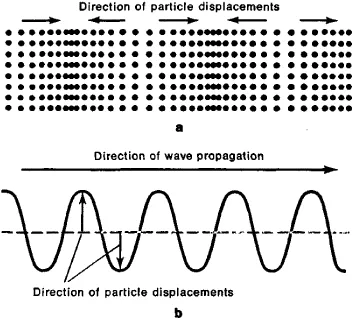PROPERTIES OF WAVES AND LIGHT

About Course
In this courses you will cover the topics related to the properties of waves, namely:
- Wave motionMotion is the act of changing location from one place to ano... More: e.g. vibrations in ropes, Springs
- Different types of wave: Transverse (water and light waves) and Longitudinal (sound waves) in terms of direction of oscillationOscillation is a regular periodic movement of a pendulum bob... More
- The wave equation: Displacement-time and displacement – distance graphs of a wave. (Use the equation v = fl.)
- Use of waves in our life: radio, television, ultrasonic etc.
- Scientific terms: Propagation-transmission, reflection- and refraction of waves. Diffraction of waves using wide, narrow gaps, sharp edges.
- Two types of Interference of waves: such as Constructive and destructive
- The characteristics of sound waves: Loudness of sound and its amplitudeAmplitude (Angular amplitude) is the maximum displacement of... More
- Pitch of sound and its frequencyFrequency is the number of occurrences( repetition or oscill... More
- Factors which influence the quality of sound: such as overtones or wave form of the note
- Production of sound using vibrating objects
- Sound wave essentials: rarefactions (stretches) and compressions (“Squashes”)
- Range of audible sound frequencies (20Hz to 20000Hz)
- Effects of sound waves traveling through air and a vacuum
- Speed of sound in air (approximately 330m/s)
- Respective speeds of sound in solids, liquids and gases
- The characteristics of sound waves: Loudness of sound and its amplitudeAmplitude (Angular amplitude) is the maximum displacement of... More
- Pitch of sound and its frequencyFrequency is the number of occurrences( repetition or oscill... More
- Factors which influence the quality of sound: such as overtones or wave form of the note
Course Content
SIMPLE IDEAS OF WAVE MOTION
Concepts of Wave (Introduction)
00:00The behaviour of waves
00:00
SOUND WAVES
Student Ratings & Reviews

No Review Yet